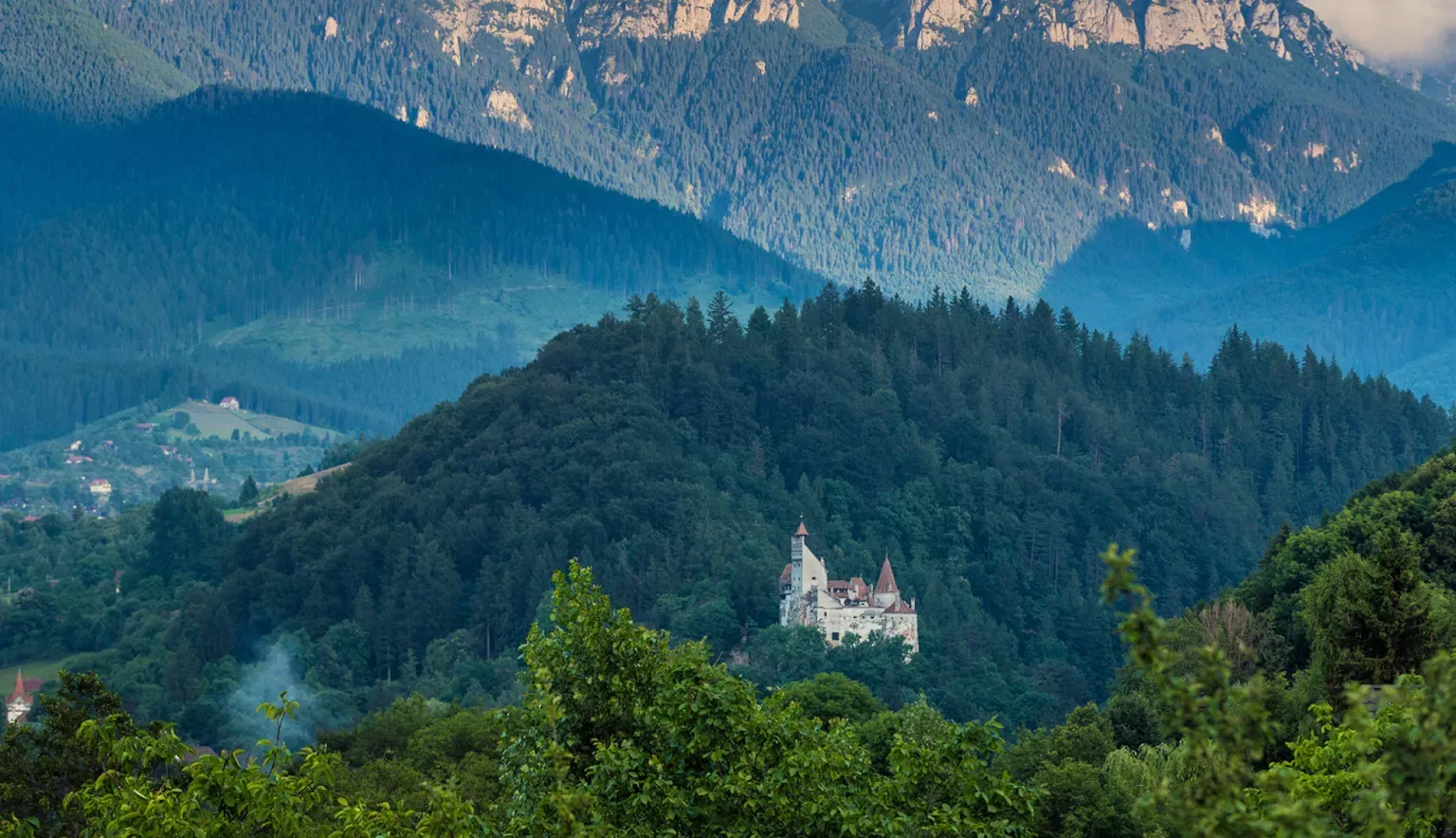The fascinating Eastern European country of Romania has so much to offer, from clifftop castles to atmospheric medieval mountain towns.
ROMANIA
Romania is a country of remote mountain passes, of quiet medieval villages and hauntingly atmospheric forests. It’s a country that still, in places, feels unexplored.
The country is bisected by the Carpathian Mountains, craggy stone peaks surrounded by forests inhabited by brown bears. You can take a guided tour to special bear hides where you can observe them in the wild. The Danube Delta, one of Romania’s eight UNESCO World Heritage Sites, is another great spot for wildlife watching. Comprising nearly 6,000 metres of rivers, lakes and canals dotted with islands, it boasts over 5,500 species of flora and fauna, including wildcats, wolves, Egyptian white pelicans and white-tailed eagles.
Romania’s architecture is equally fascinating, reflective both of its communist legacy and position at the crossroads between different between Roman and Ottoman Empires. The city of Brasov offers up pastel-hued squares of medieval houses, the gothic spires of the Black Church and soviet tower blocks. Sighisoara, the best-preserved medieval town in Europe, has colourful houses and cobbled streets and appears to have come from the pages of fairy tale. However, it’s the birthplace of Vlad the Impaler, the ruthless ruler who inspired the legend of Dracula.
Other architectural highlights include the painted monasteries in Bucovina, characterised by their colourful exterior frescoes, austere clifftop castles and the gaudy palaces built by members of the country’s Roma minority, many of which are unfinished. As you visit the country’s towns, monuments and museums, you’ll slowly peel back the layers of its chequered past. The eerie, sublime landscapes will remain in your mind long after you return home.
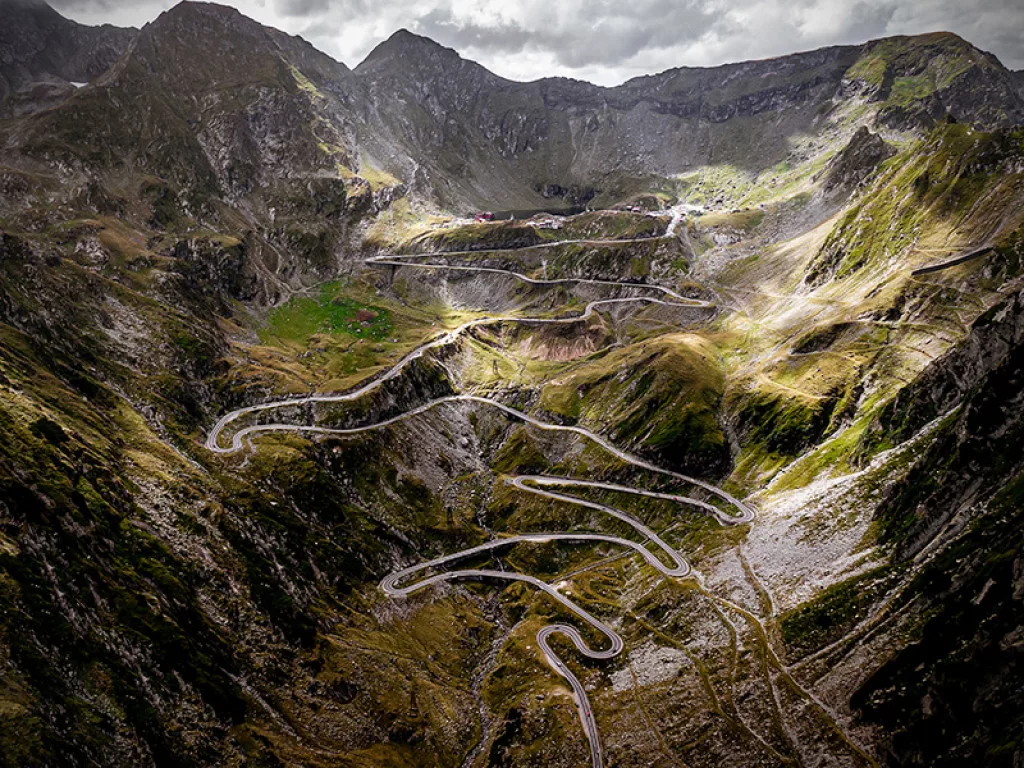
TOURISM INSIGHTS: FEDERATION OF THE HOTEL INDUSTRY OF ROMANIA
The Federation of the Hotel Industry of Romania (FIHR) was the first tourism association to be established in Romania after the fall of communism in 1989. It was founded in April 1990 by a group of visionary hoteliers, and from the very beginning has represented the interests of the hotel industry.
The organisation’s initial vision was to be a strong and credible voice of the industry, to support its interests in relation to both the business environment and the authorities. Professionalism, trust and solidarity are the values that underpin FIHR.
We spoke to the President of FIHR, Calin Ile, about the organisation’s goals, visions and the challenge of the coronavirus.
Q&A WITH CALIN ILE, PRESIDENT, FIHR
Your organisation recently celebrated its 30th anniversary. What are the most important things it has achieved for the tourism industry in Romania in the last three decades?
Calin Ile (CI): We have always acted to support the industry and believe we have achieved a lot. We have provided support to the industry through the difficult period of shifting from communism to a privatised, market-driven economy. We have constantly interacted with the authorities to maintain a supportive fiscal level for tourism – we now have one of the lowest VAT levels in Europe.
Another thing we’re proud of is the education and support we’ve provided for the tourism workforce through classes, training programmes and collaborations with tourism schools. We have just launched a new series of online classes with our international partner Winsedswiss.
Over the 30 years we’ve also come up with many ideas to promote Romania as a tourist destination, through branding initiatives and programmes such as Experience Romania, Flavours of Romania, Wild Carpathia and many others.
What are your organisation’s current goals?
CI: Our main goal is to be affiliated to HOTREC (a European umbrella association representing hotels, cafés, restaurants and bars in Europe) in order to harmonise our policies in hospitality with the ones in Europe.
We are continuously collaborating with local and national authorities to put tourism on all priorities of the future Romanian economy. We also intend to improve the level of professionalism of the Romanian workforce and as a consequence, the level of service offered by our properties.
But all this can only be achieved if our association is growing, and for that reason we are very much focussed on strengthening the capabilities of the FIHR.
Are there any interesting projects in the pipeline you wish to highlight?
CI: Our new project of online training programmes is for us a way to be closer to the new trends in the education industry.
One of our main projects is to set up a system of active, effective destination marketing organisations (DMOs) in Romania. This will ensure that the promotion of Romania will be done in a private public partnership and not only by the state or local administration, as it is today. This is a priority for us , and we have used a lot of resources to be successful in this ambition.
Why, in your opinion, should someone visit Romania?
CI: There are many reasons to come here, but let me just mention three of them. First, for Romanian authenticity. It is a country with unspoiled nature and well-preserved villages, with diverse flora and fauna, breathtaking landscapes and traditional food. You’ll learn about a simpler way of life, although at the same time there are plenty of Black Sea resorts where you can enjoy summer parties.
Second, for its people. Interacting with the locals is a great experience – Romanians are very welcoming people, who love to have guests.
Finally, because it’s worth it. Within three hours’ flight from most European cities, offering a high level of services and attractions for a reasonable price, you’ll be able to explore a unique destination.
What are some of the country’s most unique landmarks?
CI: I would say Transylvania, as it has all the ingredients to become the Tuscany of Eastern Europe with its nature, wines, forests, citadels and good food. The Danube Delta is another unique attraction: you can go birdwatching, fishing, enter into ancient traditions and experience the local way of life.
Bucharest is also an attraction, being a lesser known city with a mixture of historical influences, the confluence between east and western Europe – something that has left its traces on architecture, food and culture.
What trends are transforming the hospitality industry in Romania and how are you utilising them?
CI: We are a country with one of the highest internet speeds, so digitalisation is affecting the hospitality industry, like everywhere in the world.
‘Developing’ is also a good word to describe the actual evolution of Romanian tourism; we are constantly capturing new areas, and new operators are appearing every year in the market. As we are quite a new actor in global tourism, we have the chance to position ourselves differently, and this means creativity and diversification.
What challenges does the tourism industry in Romania face?
CI: The coronavirus pandemic is a major challenge for tourism operators all over the world. We are very much affected as an industry, and we have to transform and reinvent the way we act.
But as this is valid for all countries, we are all on the same level now. This could be an opportunity for us to be more visible and more active in one of the most beautiful sectors of the worldwide economy.
We will pass together through this crisis, people will start to travel again and we will be there to welcome them.
I am optimistic we have all a country needs to be a well-known international actor in tourism. What we need is good organisation and confidence in ourselves to enter the game.
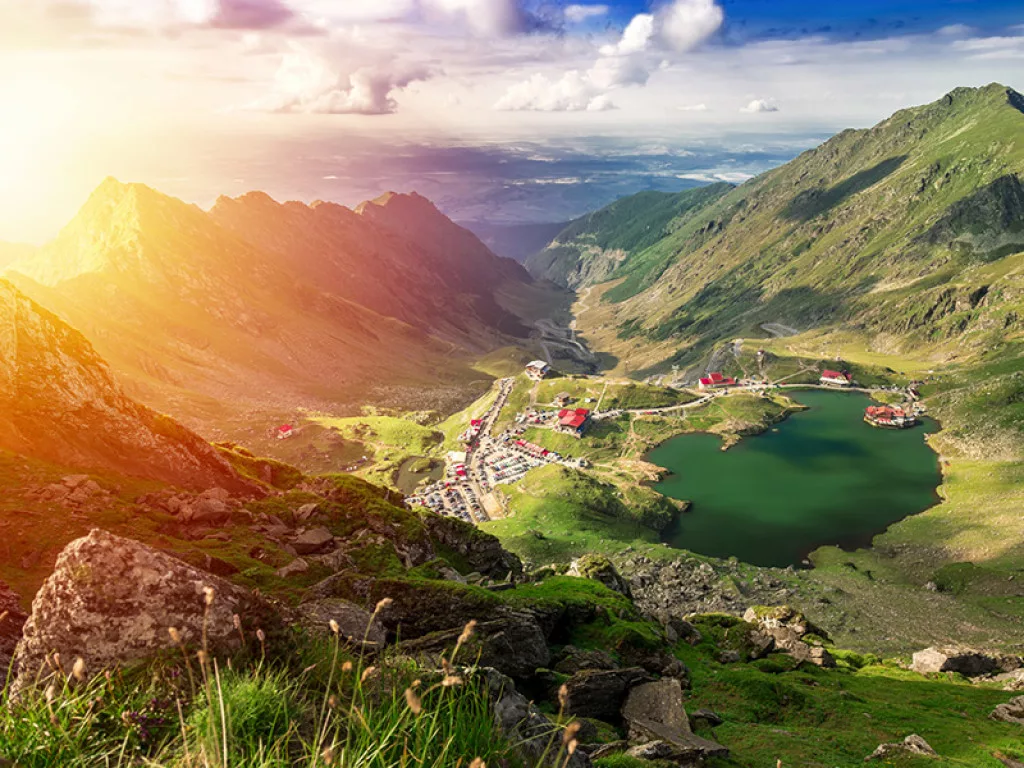
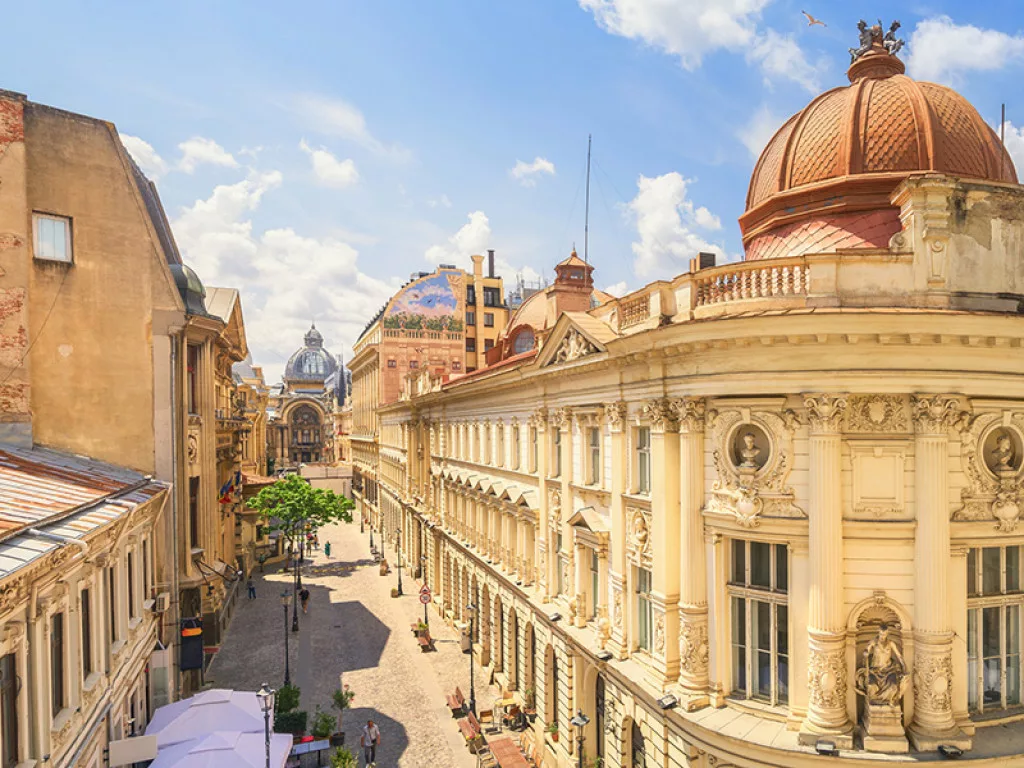
BUCHAREST IN FOCUS
Bucharest is Romania’s energetic and resilient capital. After suffering the ravages of heavy bombing during World War II and the brutalist urban planning of communism, the historic centre is being refurbished to its former glory, and there are still plenty of belle epoque villas, gothic churches and renaissance mansions tucked away down quiet streets.
The exquisite Romanian Athenaeum has a colonnaded façade, a 41-metre-high-domed roof and an interior painted with frescos of Romanian history. Meanwhile, the vast Palace of Parliament – started by former Communist dictator Nicolae Ceaușescu in 1984 and still unfinished by his execution in 1989 – is a testament to the cult of the personality. Boasting more than 3,000 rooms, this chunky edifice is the world’s heaviest building. The National Museum of Contemporary Art is housed in the southwestern wing, and boasts an eclectic collection of Eastern European art.
The city boasts many other interesting museums, including the Art Collections Museum, which displays a collection of paintings and handicrafts donated by the most prominent aristocratic families of Romania. The Dimitrie Gusti National Village Museum is an open-air museum located in Herastrau Park, showcasing traditional houses, farms, windmills and churches from across the country.
Bucharest also boasts a great nightlife, with plenty of hip neighbourhoods and rooftop bars. Lipscani is the epicentre of many a night out. It’s Bucharest’s oldest district, with plenty of edgy clubs, bars and cafés housed in ornate buildings. Floreasca is another up-and-coming neighbourhood, with an abundance of restaurants, wine bars and manicured parks.
OUTLOOK RECOMMENDS
Eat:
For a hip restaurant in a former printing house…
For authentic Romanian fare in Bucharest..
Sleep:
For beachfront luxury…
Hotel Vega is a resort on Mamaia Beach, on Romania’s stunning Black Sea coast. You’ll love the modern facilities with a vintage touch, and relaxing on the large hotel’s private beach. Alongside high endaccommodation the hotel features a spa, several restaurants, a rooftop bar and a watersports centre.
For a boutique hotel in Bucharest…
Do:
For a sci-fi theme park in a salt mine…
For wildlife watching trips to see bears and wolves…
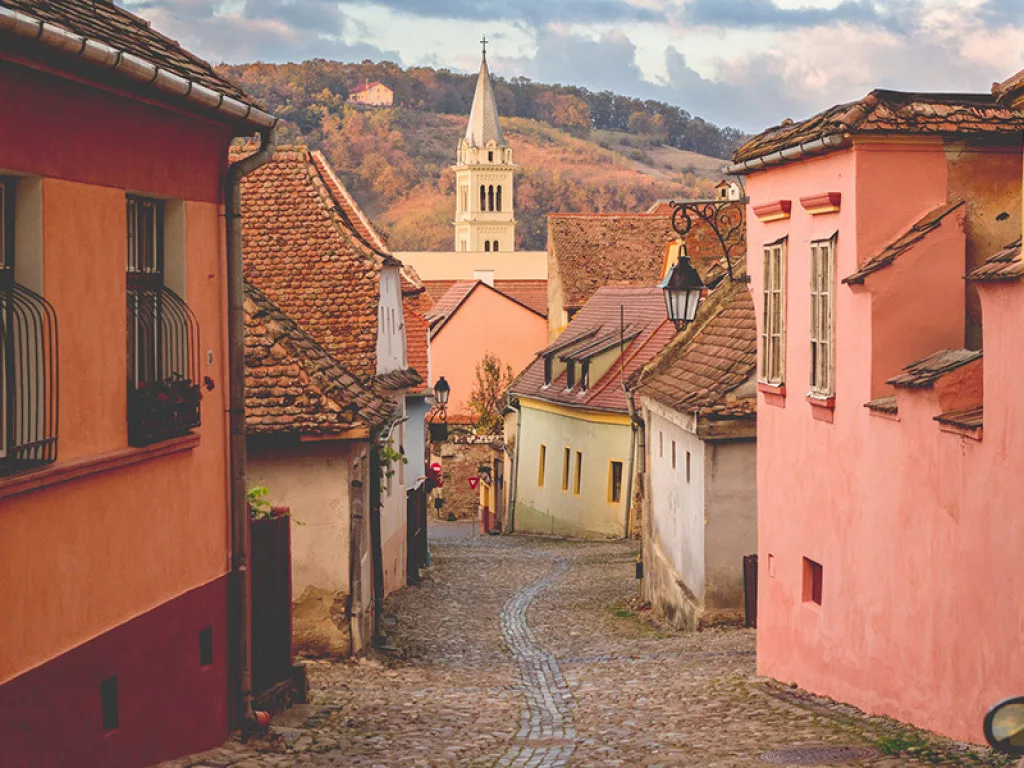
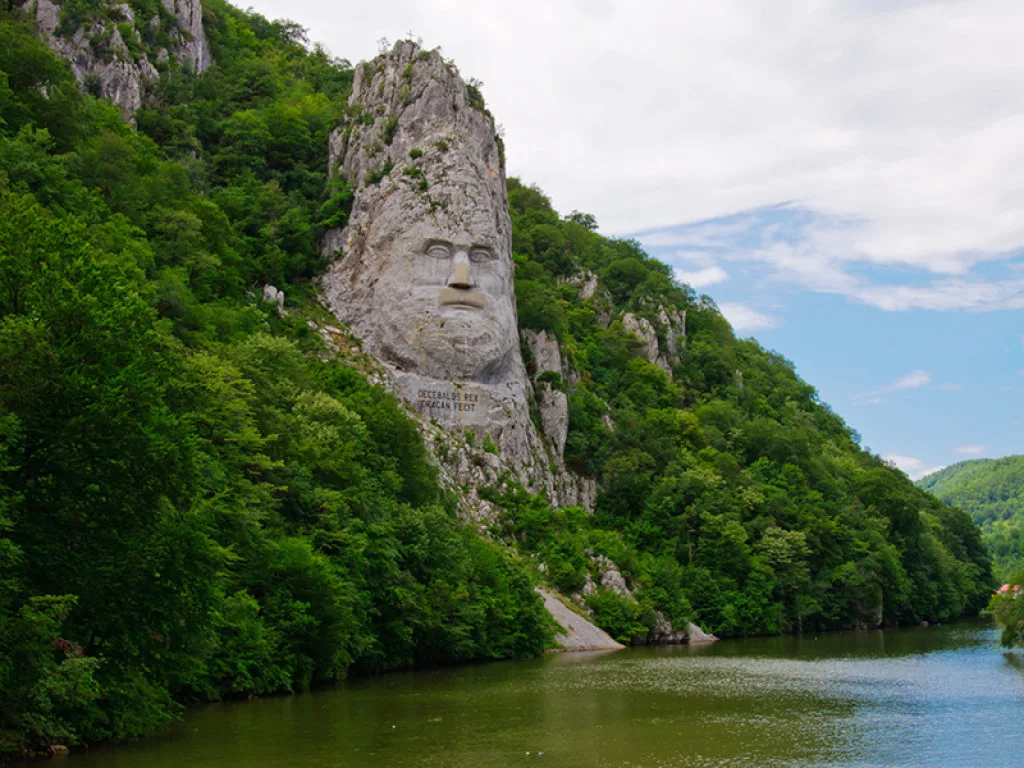
LANDMARK ATTRACTIONS
Bran Castle
One of the country’s most impressive sites is Kaiteur Falls (the largest single-drop waterfall in the world), where water gushes in torrents off a 250-metre high cliff. The falls are surrounded by ancient jungle and can be reached via plane or an adventurous five-day hike.
Transfăgărăşan Road
The British motoring programme Top Gear once voted this as the world’s most exciting length of road. Spanning 90 kilometres across the southern section of the Carpathian Mountains, between the Moldoveanuand Negoiu peaks, the road offers plenty of hairpin turns and spectacular views. One of the best attractions along the route is glacial Lake Bâlea.
The Palace of Culture
This sprawling building in the centre of Iași has an eclectic style incorporating elements of neo-gothic, art nouveau and neo-baroque design. Covering an area of 34,000 square metres, it’s said to have 365 rooms – one for every day of the year. It’s possible to tour the palace and visit any number of the four museums it houses: the Ethnographic Museum, Art Museum, History Museum and Science & Technical Museum.
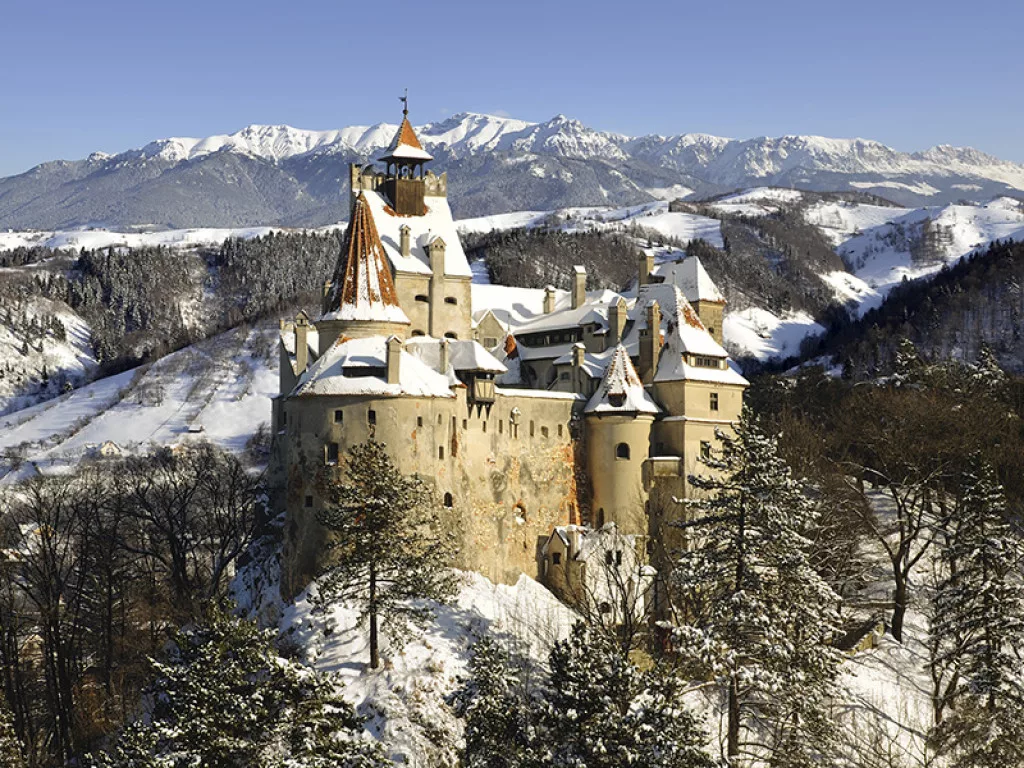
GETTING THERE AND AROUND
Bucharest Airport (also known as Henri Coanda International Airport) operates flights to 115 destinations across 37 different countries, most of which are in Europe. However, it’s also possible to get direct flights to several destinations in Canada, the Americas and the Middle East.
If you’re short on time, you can take domestic flights to different cities in Romania. The national carrier, Tarom, operates regular flights between Bucharest and Cluj-Napoca, Iaşi, Sibiu and more.
It’s also possible to travel between cities via train. Romania’s rail network links most major cities, andprovides a reliable method of transportation. Make sure you take the Intercity (IC) trains, which are the fastest and most comfortable.
For those looking to visit destinations more off-the-beaten track, then hiring a car is recommended. Romania has plenty of scenic, high-altitude stretches of road such as the Transalpina and Transfăgărăşan Road, which will provide a memorable experience for motorists.
In general, Romanian cities have a good public transport infrastructure. Bucharest has a metro system as well as a network of trams, buses and trolleybuses. To use above-ground transport, buy an Activ or Multiplucard from one of the adjacent kiosks and load it with credit. You’ll need to purchase a separate ticket to use the metro (from one of the ticket counters at any metro station).


